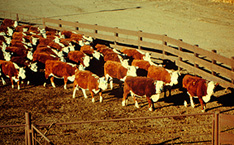In real life, the maximum size of flocks seems to be unlimited. As boid flock models demonstrate, each individual need only be accutely aware of what its immediate neighbors are doing for the entire group to move as a cohesive flock. Every bird in a flock can keep itself moving in coordination with the rest without being aware of the specifics actions of the whole group. Awareness of the flock's general heading and speed (and even then, only awareness of local conditions seems absolutely necessary) are sufficient to keep individual members in line. As such, an indefinite number of birds can join a flock without affecting the amount of information that each bird must process.
However, this is not the case with boid flock models. As the size of the flock increases, the amount of information that the computer must process increases dramatically. In fact, the increase in the computer's work as the boid flock grows is a function of the square of the flock's size. Therefore, flock size in boid models is severely limited by available computer processing power. (Craig Reynolds noticed this problem in his original paper, and this duck pond simulation report describes computational limitations as well.)

Every animal has different perceptual powers; for instance, birds often have excellent vision, whereas many fish rely little on their sight. Most animals, though, process the sensations from their different senses to navigate their surroundings. Boids, on the other hand, typically receive just the information that, theoretically, animals would have after processing their sense data. Their sense data is limited to extremely local information. This limitation is, again, imposed by computer processing power limits. Since boids necessarily get only localized information, they are better suited for modeling the behavior of animals that also use localized information, such as fish, or land animals that move in tight herds and cannot see beyond their herdmates.
As is often the case with computer models, boid-based flocking models suffer from being overly precise. This over-precision comes mainly from the (necessarily) simulated nature of the boids' perceptual faculties. In addition, no matter how accurate their perception, no creature can process information and make judgments with total accuracy. However, even though boids know few things, what they do know, they know exactly. In response to this, many animal group behavior models (such as this one) purposefully incorporate imprecision.
home
boid rules
boid models
applications
bibliography
last updated: May 5, 2000 (chris boone,
sam hillier)